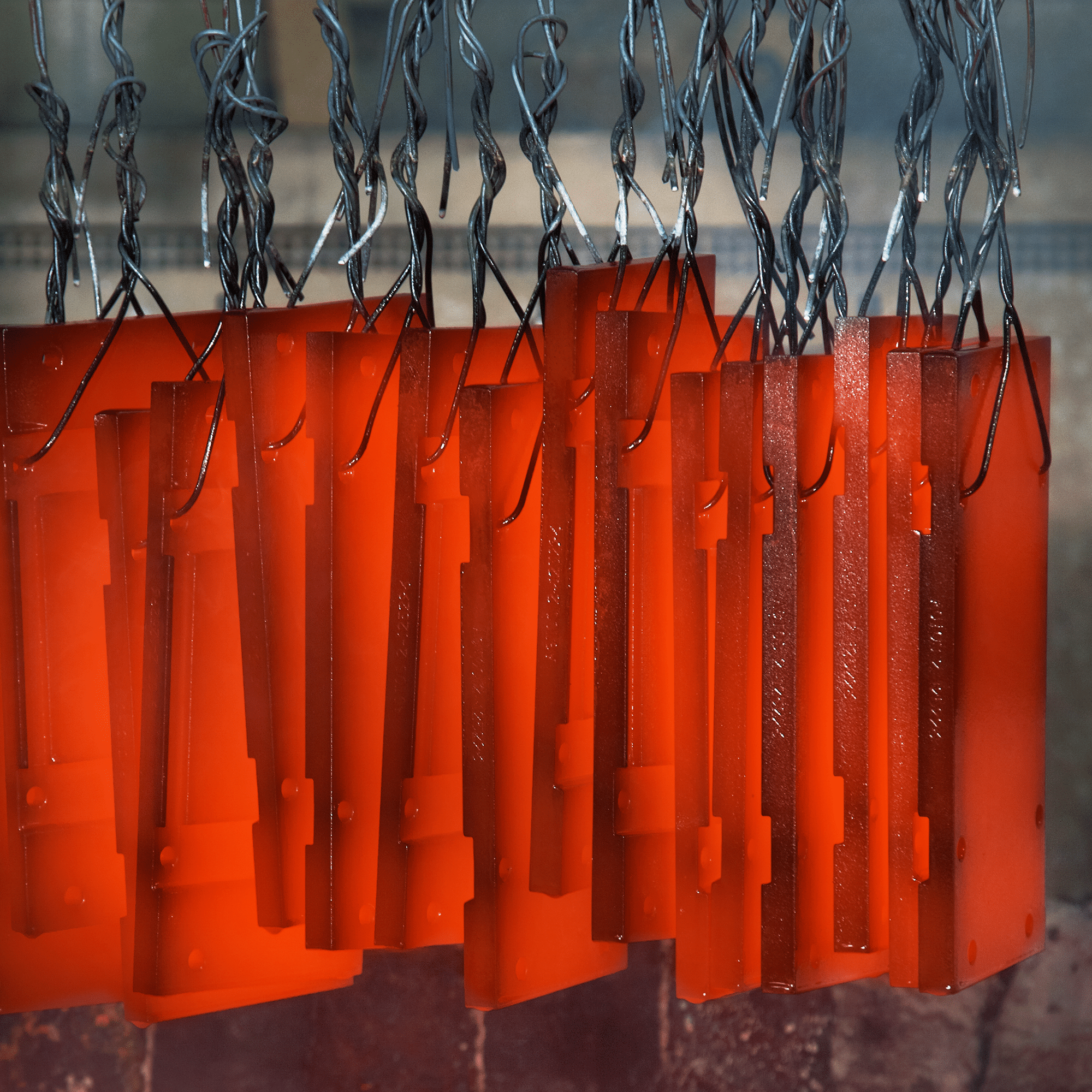
The process and its advantages
Salt bath nitriding starts off with a heat treatment of the workpieces at approx. 350°C. This treatment is followed up with the creation of a protective diffusion zone in a 580 °C nitriding bath consisting of a salt melt. During this treatment, both nitrogen and carbon penetrate the surface of the component.
For the desired properties, the chemical composition of the salt melt is controlled accordingly. The treatment can last from a few minutes to several hours, depending on the type of steel. Once the treatment time has elapsed, water, oil, or a polymer is used to quench the workpieces.
Post-treatment in an oxidation bath: Tenifer QPQ process
In the Tenifer QPQ process, workpieces are placed in an oxidation bath after the nitriding bath. The workpieces are then quenched with water. Tenifer creates extremely high corrosion resistance, often surpassing even galvanic coatings. Additionally, the workpieces obtain an elegant blackened surface.
The advantages of salt bath nitriding/salt bath nitrocarburising at a glance
- Improved resistance to wear and corrosion
- Increased fatigue resistance
- Pleasing aesthetics of the components thanks to blackening oxidation
- Minimum warping makes reworking the components unnecessary
- Reliably reproducible results
- Short treatment times
- The nitrided layer is heat-resistant up to 600°C
- Partial hardening possible
- High-alloy and high-chromium steels can also be treated
the process and its advantages
In general, all grades of steel are suitable for salt bath nitriding. However, certain alloy steels are especially suitable for this process. The process is a particular favourite in mechanical engineering and the automotive industry.
Summary: Typical real-world applications
- Mechanical and apparatus engineering
- Vehicle construction
- Precision engineering
- Automotive industry
Summary: Which materials are suitable?
- Steel materials
- Cast materials
- Sintered materials
- Non-alloy materials
- Low-alloy materials
- Medium-alloy materials
Check list: Ordering salt bath nitriding
If you would like us to treat your workpieces or materials with a salt bath nitriding process, we will gladly advise you on the best procedure. You can use the check list below to make your preparations for the order.
- Which material is to be treated, and what is its condition?
- What is the target hardness (including tolerance range in HV)?
- What is the desired nitriding hardness depth (including tolerance range in mm)?
- If applicable, which areas are to be salt bath nitrided, and where can the hardness be measured?
- If applicable, how thick should the compound layer be (including tolerance range in μm)?
Note:
We use a sample that we take ourselves to measure the thickness of the compound layer and/or the nitriding hardness depth. For measurements that are specifically related to your order, we need you to provide us with a reference component that is intended for the hardening treatment.
Process locations
We offer state-of-the-art salt bath nitriding processes at the following locations: location overview